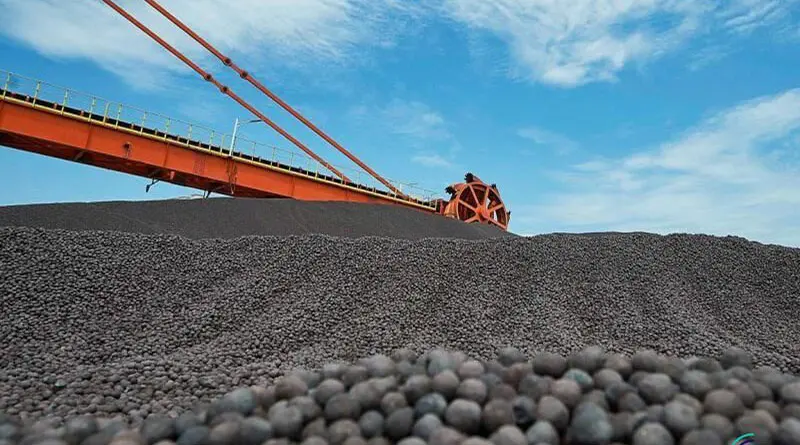Sponge iron is key in part manufacturing. It is the starting material when producing high-quality steel. Rather than transforming scrap steel into the finished product, you can easily use sponge iron that has a low impurity level with a consistent chemical composition. To get sponge iron, the process involves removing oxygen without melting the iron ore. This operation is energy-efficient and eco-friendly.
This article will be your guide on sponge iron. It will explain what sponge iron is, the direct reduced iron process for sponge iron, and the applications of sponge iron in modern manufacturing.
What Is Sponge Iron?
Sponge iron, also known as direct reduced iron, is the main raw material for steel production. It is the product obtained when iron ore is reduced in the presence of carbon or a reducing gas. This reduction process converts it to a porous and spongy form used as a substitute for scrap.
Sponge iron is pure and has very low concentrations of unwanted elements. You can produce it using different reduction techniques from various iron ores. Additionally, the manufacturing process is energy efficient because there is no need for melting.
The Direct Reduced Iron (DRI) Process for Sponge Iron
The process of converting iron ore (Fe2O3 or Fe3O4) in its solid state to sponge iron is generally known as the direct reduced iron (DRI) process. DRI reduces iron in its solid state. Because this process is carried out at a relatively low temperature, usually 800 to 1,200 degrees Celsius, it does not melt the iron. To carry out the DRI technique,
- You have to obtain the iron ore which can be in the form of pellets or lumps. You then screen the iron ore to ensure they are uniform in size. Add additives such as dolomite if needed.
- The next step is to get the reduced gas. The standard gas is a natural gas reformer into H2 and CO after reacting with steam at high temperatures.
- After that, carry out the reduction process in a reactor. The iron ore and reducing gas meet and react in a controlled environment.
- The next step involves cooling to prevent reoxidation naturally. You then obtain the cooled product from the reactor and separate contaminants including dust and fines.
- Finally, inspect the product and check the impurity level. Store in a suitable container away from oxidants to ensure stability.
Advantages of Sponge Iron in Steelmaking
Many part manufacturers use sponge iron extensively when making steel in electric arc furnaces. This material can replace scrap steel in cases of scarcity. Let’s discuss the benefits sponge iron offers when making steel.
Consistent Chemical Composition
You can easily predict the chemical composition of sponge iron. It has a high iron content with minimal fluctuations in elements. This property makes it possible to produce high-grade steel from sponge iron exactly to specifications.
Low Impurity Level
With sponge iron, the impurity level is low. Typically, this material contains 85-95% iron with minimal metallic and nonmetallic inclusions. Unlike scrap steel which contains high levels of impurities that may be difficult to remove, sponge iron is a superior material.
Energy Efficient
The process of producing steel from sponge iron is energy efficient. Sponge iron reduces the overall energy consumption in electric arc furnaces. The reasons behind this are the high metallization and reduced slag formation in sponge iron. The steel-making operation is clean and does not generate significant emissions.
Availability and Scalability
Sponge iron is a readily available material and reduces dependency on imported scrap steel. Furthermore, making sponge iron from the ore is adaptable and scalable. You can carry out the process in various capacities. From small plants to large-scale operations, sponge iron can meet most industries’ demands.
Applications of Sponge Iron in Modern Manufacturing
The applications of sponge iron in modern manufacturing are endless. The following are ways you can use sponge iron.
Steel Production
Sponge irons are primarily used in steelmaking. It has replaced scrap steel in areas where this material is not available. Its low impurity level and high metallization make it suitable for this application. Furthermore, it is possible to blend sponge irons with scrap steel to obtain a product with controlled chemical composition. You can get all forms of steel including low-carbon steel, and stainless steel with a good finish.
Production of Cast Iron
You can also use sponge iron when manufacturing cast iron instead of going the conventional way. It is a suitable raw material capable of producing cast iron with the right composition and mechanical properties. You can get ductile and gray iron castings used in various manufacturing sectors.
Automotive Industry
The automotive industry uses sponge iron a lot. Auto part manufacturers utilize this material when producing lightweight and high-strength steel components such as frames and structural parts. Sponge iron also has applications in manufacturing engine and transmission parts. This material improves fuel efficiency and passenger safety.
Construction and Infrastructure
Another area where sponge iron thrives is in the construction sector. It is the raw material of choice when producing high-quality reinforcement bars. This structure is strong and durable. You can also use sponge iron when fabricating structural steel beams because of its stability and load-bearing capacity.
Machinery and Equipment
The high-quality cast iron and steel used in producing components of machines and equipment are products of sponge iron. This material is perfect when manufacturing parts of mining and agriculture machinery. You can also use steel for gearboxes, bearings, pumps, and valves. Steel has excellent machinability and you can get complex shaped components from it.
Shipbuilding and Marine Engineering
Sponge iron plays a crucial role in shipbuilding and marine engineering. Parts made using this material can withstand the saltwater environment and will not degrade when in prolonged contact. Additionally, they have a high tensile strength and impact resistance. Examples of sponge iron-based marine components are ship decks, propulsion systems, and offshore structures.
Tips and Considerations in Sponge Iron Production
To get the highest quality sponge iron, there are some factors you should be aware of. The following are tips and considerations in sponge iron production.
Raw Material Selection
The quality of the iron ore will determine the sponge iron you will get and overall plant performance. Ensure the type of iron is of the purest grade. The presence of impurities such as sulfur and phosphorus will make the final product brittle. Furthermore, prioritize using uniform particle size to ensure consistent gas flow.
Production Process Selection
The production process you use is also important. The operation can either be gas or coal-based. The technique employed depends on resources available, and your budget. The gas-based process is preferred if you have access to a reliable supply of natural gas. On the other hand, go for coal-based processes if coal is abundant.
Environmental Considerations
You should also consider the impact the sponge iron production process has on the environment. Put adequate measures in place to manage carbon emissions and other pollutants. Additionally, you should properly dispose of wastes such as ash and char to keep the environment green. For stages that require water, make sure you recycle or treat it before disposal.
Conclusion
Sponge iron is an important raw material in manufacturing industries. It is the starting material when producing cast iron and steel. The process of getting sponge iron is known as direct reduction. It involves removing oxygen from iron ore without melting it. Sponge iron has widespread use because of its high purity level and energy-efficient production process. When making sponge iron, you should carefully select the raw material and dispose of waste properly.




